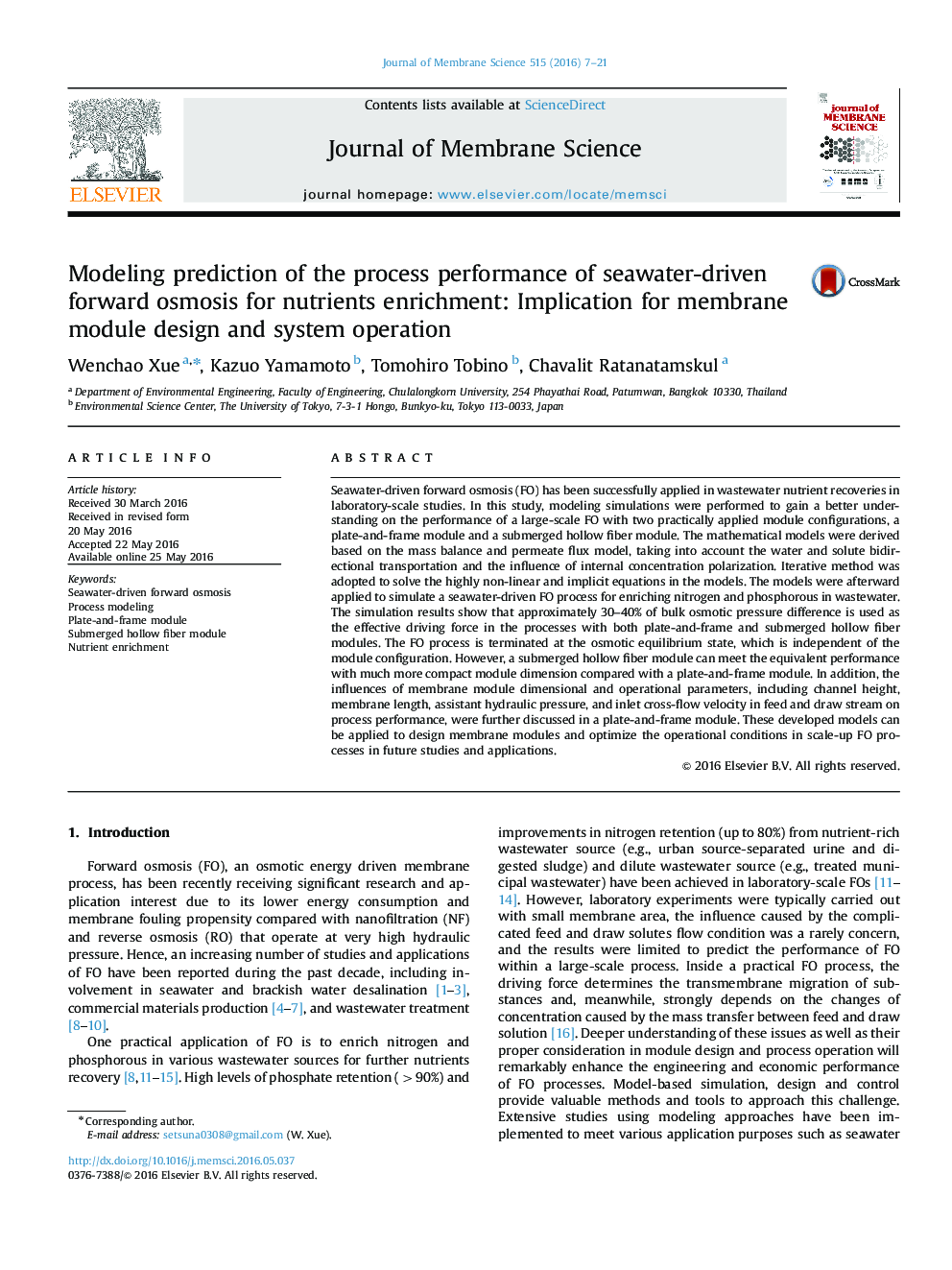| کد مقاله | کد نشریه | سال انتشار | مقاله انگلیسی | نسخه تمام متن |
|---|---|---|---|---|
| 632370 | 1455984 | 2016 | 15 صفحه PDF | دانلود رایگان |
• Mathematical modeling was developed to simulate scale-up FO for nutrient recovery.
• Performance of plate-and-frame and submerged follow fiber module was compared.
• Approximately 30–40% of osmotic energy is used as effective driving force.
• Effects of channel height, membrane length, and inlet velocity were discussed.
• MF/UF level pressure-assisted operation significantly improves FO flux condition.
Seawater-driven forward osmosis (FO) has been successfully applied in wastewater nutrient recoveries in laboratory-scale studies. In this study, modeling simulations were performed to gain a better understanding on the performance of a large-scale FO with two practically applied module configurations, a plate-and-frame module and a submerged hollow fiber module. The mathematical models were derived based on the mass balance and permeate flux model, taking into account the water and solute bidirectional transportation and the influence of internal concentration polarization. Iterative method was adopted to solve the highly non-linear and implicit equations in the models. The models were afterward applied to simulate a seawater-driven FO process for enriching nitrogen and phosphorous in wastewater. The simulation results show that approximately 30–40% of bulk osmotic pressure difference is used as the effective driving force in the processes with both plate-and-frame and submerged hollow fiber modules. The FO process is terminated at the osmotic equilibrium state, which is independent of the module configuration. However, a submerged hollow fiber module can meet the equivalent performance with much more compact module dimension compared with a plate-and-frame module. In addition, the influences of membrane module dimensional and operational parameters, including channel height, membrane length, assistant hydraulic pressure, and inlet cross-flow velocity in feed and draw stream on process performance, were further discussed in a plate-and-frame module. These developed models can be applied to design membrane modules and optimize the operational conditions in scale-up FO processes in future studies and applications.
Figure optionsDownload high-quality image (235 K)Download as PowerPoint slide
Journal: Journal of Membrane Science - Volume 515, 1 October 2016, Pages 7–21
